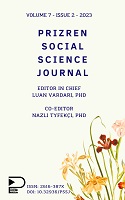THE RELATIONSHIP BETWEEN RISK AND COST OF QUALITY: THE CASE OF JESSE LANGFORD
THE RELATIONSHIP BETWEEN RISK AND COST OF QUALITY: THE CASE OF JESSE LANGFORD
Author(s): Süleyman Yükçü, Selda KorgaSubject(s): Business Economy / Management, Management and complex organizations, Family and social welfare, Sociology of Culture, Socio-Economic Research
Published by: Association of Scientists and Intellectuals of Kosovo
Keywords: Risk; Quality Cost; Jesse Langford Case;
Summary/Abstract: Risk permeates every moment of life, impacting both individuals and businesses through their activities. While certain risks encountered have a minimal likelihood of materializing, others possess a considerable probability. Preventing risks in life entails averting failures. The most effective approach to preventing failures, both in business and all aspects of life, is through proactive measures that eliminate the underlying causes of failure before they occur. Engaging in prevention activities is invariably more cost-effective than dealing with the potential consequences and expenses associated with failures. In situations where the risk's realization probability is high, preventive measures can be implemented to mitigate or prevent it altogether. Consequently, by actively addressing risks, failures can be averted through risk prevention. This study aims to conduct a comparative analysis of the concepts of risk and quality within the realm of costs while introducing the concept of risk-quality cost mapping to the existing body of literature. Within this framework, the study initially establishes a connection between the elements of the risk management process and quality costs. Subsequently, a real-life case is examined to assess its implications in terms of both risk and quality costs. As can be seen in the case of Jesse Langford, it is clear that the implementation of comprehensive prevention measures plays a crucial role in minimizing failure costs, ultimately reducing them to a negligible level during travel. As a result of preventive measures, the costs associated with failures can be avoided, the impact of risks can be reduced, and in some cases, the costs of failure can be substantially eliminated.
Journal: Prizren Social Science Journal
- Issue Year: 7/2023
- Issue No: 2
- Page Range: 48-61
- Page Count: 14
- Language: English

